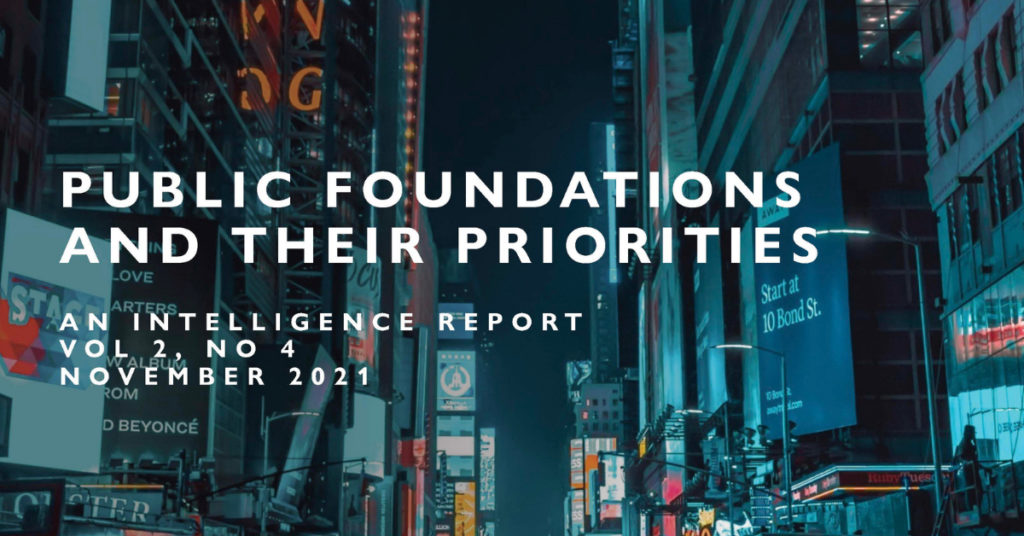
(December 15, 2021) The Charity Report released its latest intelligence report today. Public Foundations and their Priorities looks at the behaviour of public foundations—where they get their revenue and where they spend it.
The report looked at the performance of public foundations for 2019, about 4,900 foundations in all. It also took a deeper analysis of the top 20 public foundations by gross asset value from 2006 through to 2019, which provided an understanding of dynamics over time.
Public foundations include hospital foundations, community foundations, foundations holding DAF funds by demographic connection such as community or faith, and DAF-based foundations that have been put into place by banks and investment companies to hold their clients’ donor advised funds (DAFs).
The amount of money being handled by public foundations has grown significantly in the past 15 years. In 2019, the cumulative gross asset value of public foundations had risen to 41.6 billion.
“Public foundations spent a larger percentage of their asset value than private foundations,” says Gail Picco, editor in chief of The Charity Report, “but again we see how the charitable tax receipting system in the foundation context constitutes inequity in practice.
“The charitable tax system as is currently practiced operates like a funnel. It gathers up money (tax credits) from all of Canadian taxpayers and then guides that contribution from many into the bank accounts of a few. All Canadians pay for the charitable tax credit, yet most of the money granted by public foundations go to a tiny number of charities.”
In 2019, 0.54% (593) of qualified donees received 60.5% (2.72 billion) of the total grants given. Among this top echelon, the average grant was $4,588,045. In comparison, 78% of donees received grants of $10,000 or less, with 40% of donees receiving grants of $1,000 or less.
Other observations include:
- The value of the combined assets of all public foundations increased by 17.7% from 2018 to 2019
- The value of assets belonging to public foundations created by financial institutions, and made up of donor advised funds, grew by 1761.03% from 2006 to 2019
- By comparison, the asset value of the top 6 community foundations grew by 242.35% from 2006 to 2019
- Public foundations made 110,735 grants in 2019
- From 2006 to 2019, six hospital foundations spent close to $2 billion on fundraising costs.
- Between 2006 and 2019 the top 20 public foundations received more in tax credits than they granted to qualified donees
In addition to offering a snapshot of 2019 behaviour, the report also tallies the assets, tax receipted revenue, gifts to qualified donees, number of staff and average salary of the top 20 public foundations, as well as the top 10 grant recipients.
“The big question at this time with foundations holding on to billions of dollars more in so-called ‘dead money’, is whether Canadians are better off supporting foundations with the current charitable tax credit system where a lot of money is tied up in assets and the intention is to only ever spend the earnings. Or do we need to find a more equitable way of encouraging philanthropy of all kinds, while discouraging the preservation of tax-subsidized fortunes over many generations,” says Picco.
“Our hope is that this intelligence report will arm the people contributing to this decision making with the information they need to make informed public policy from an independent source.”
The full intelligence report Public Foundations and their Priorities is available with your subscription to The Charity Report. Or you can purchase a copy for $99. Click here to buy your report today.
Related Reading
Top 20 private foundations accumulate $40 billion in wealth, spend pennies on the dollar September 24, 2021